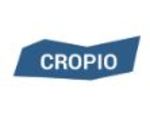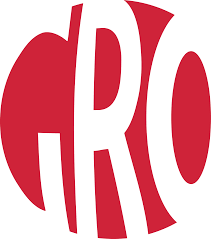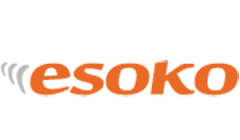Description

Cropio

Gro Intelligence
Comprehensive Overview: Cropio vs Gro Intelligence
Here’s a comprehensive overview of Cropio and Gro Intelligence, two prominent agricultural intelligence platforms:
Cropio
a) Primary Functions and Target Markets
- Primary Functions: Cropio is a satellite-driven agricultural management system that allows users to monitor fields, manage farm operations, and increase productivity. Its core functionalities include real-time field monitoring, weather forecasting, yield prediction, and resource management.
- Target Markets: Cropio primarily targets agricultural producers, agronomists, and farm managers, particularly those operating large-scale farms or agricultural enterprises. Its tools are designed for users seeking to optimize field operations and make informed decisions based on data.
b) Market Share and User Base
- Cropio has garnered a significant user base, particularly in regions where satellite imagery can be extensively utilized, such as Eastern Europe, Russia, and parts of the United States. However, specific market share figures are typically closely held, making precise comparisons challenging.
- The platform aligns with the needs of medium to large-scale farming operations in its primary markets.
c) Key Differentiating Factors
- Satellite-Driven Insights: Cropio is distinguished by its use of high-resolution satellite imagery, providing detailed and timely insights directly relevant to farm management.
- Operational Focus: It offers a suite of tools aimed at improving operational efficiency, including machinery tracking and field task management.
- Localized Expertise: Cropio has developed strong expertise in specific regional markets, adjusting to localized agricultural practices and climatic conditions.
Gro Intelligence
a) Primary Functions and Target Markets
- Primary Functions: Gro Intelligence is a data-driven platform specializing in agricultural, climate, and economic insights. It aggregates vast amounts of data from various sources, providing analytics on crop forecasts, climate impacts, pricing trends, and more.
- Target Markets: Gro Intelligence serves a broader audience including agricultural producers, financial and investment firms, policy makers, and researchers. It aims at those needing comprehensive data analytics and insights beyond farm operations.
b) Market Share and User Base
- Gro Intelligence has established itself as a leader in agricultural data analytics, with a notable presence among financial analysts and policy experts apart from typical agricultural stakeholders.
- The platform’s diverse data offerings attract a wide range of users globally, particularly in regions where data-driven decision-making is pivotal for economic and agricultural planning.
c) Key Differentiating Factors
- Data Aggregation and Variety: Gro Intelligence stands out due to its ability to aggregate and analyze diverse datasets, offering macro-level insights into agriculture and related sectors.
- Climate and Economic Insights: Unlike typical farm management tools, Gro Intelligence provides significant insights into climate change impacts and economic trends affecting the agricultural landscape.
- Broad User Base: The platform caters to a wider array of sectors than typical precision agriculture tools, supporting both high-level decision-making and micro-level agricultural planning.
Comparison Summary
- Market Scope: While Cropio is more focused on direct farm management efficiency with a concentration on real-time field data, Gro Intelligence offers a broader range of insights beneficial to various sectors, including finance and policy.
- Technology Utilization: Both platforms leverage advanced data analytics, but Cropio emphasizes satellite imagery, whereas Gro Intelligence is known for its sophisticated data aggregation across numerous sectors.
- User Base: Cropio’s user base is mainly operational and agriculture-centered, while Gro Intelligence’s is more diverse, spanning multiple industries concerned with agriculture.
These differentiations allow both platforms to cater to distinct needs within the agricultural sector, with Cropio focusing on direct field management and Gro Intelligence offering broader analytical solutions.
Contact Info

Year founded :
Not Available
Not Available
Not Available
Not Available
Not Available

Year founded :
2014
+1 718-935-0100
Not Available
United States
http://www.linkedin.com/company/gro-intelligence
Feature Similarity Breakdown: Cropio, Gro Intelligence
As of my last update in October 2023, Cropio and Gro Intelligence are both platforms that deal with agricultural data and analytics, but they have different focuses and target audiences that lead to both commonalities and differences in their features.
a) Core Features in Common:
-
Data Integration and Management:
- Both platforms offer robust systems for integrating various data sources. They allow users to manage, analyze, and interpret data pertinent to agriculture.
-
Real-time Analytics:
- Cropio and Gro Intelligence provide real-time data analytics to help users make informed decisions based on current agricultural conditions, weather, and market trends.
-
Remote Monitoring:
- Both offer remote monitoring capabilities, though with different approaches. Cropio is more focused on satellite imagery for crop monitoring, which may be a feature in Gro Intelligence but within a broader data context.
-
User Interface and Accessibility:
- Both platforms aim to be user-friendly with dashboards and tools that help users easily visualize and understand data.
b) Comparison of User Interfaces:
-
Cropio:
- Cropio’s interface is likely more tailored towards agricultural management operations, offering detailed maps and satellite-based monitoring tools. The UI is designed to assist users, primarily farmers and agronomists, with a practical, operation-level view of their fields.
-
Gro Intelligence:
- Gro Intelligence focuses more on broader data analytics and insights. Its interface may incorporate more extensive dashboards, visual data analyses, and economic forecasting tools that appeal not just to agricultural stakeholders but also to financial analysts, commodity traders, and policy makers.
In summary, Cropio may have a more field-level operational interface, whereas Gro Intelligence likely supports strategic decision-making with a data-analytic centered interface.
c) Unique Features:
-
Cropio:
-
Satellite Imagery & Field Monitoring: Cropio offers advanced satellite imagery to monitor crop health and growth systematically. It is particularly strong in providing detailed, field-specific data and insights.
-
Task Management: Cropio often incorporates features aimed at facilitating task management for agricultural operations, which includes tools for planning and tracking fieldwork.
-
-
Gro Intelligence:
-
Comprehensive Data Library: Gro Intelligence’s platform includes a vast array of global agricultural, climate, and economic data that goes beyond farm management to assist with strategic decision-making.
-
Economic Modeling and Forecasting: Gro Intelligence offers advanced tools for economic modeling, risk assessment, and forecasting, making it appealing for those interested in larger-scale agricultural production trends, policy implications, and market dynamics.
-
While both platforms serve the agriculture industry, Cropio leans more towards direct farm management, whereas Gro Intelligence provides broader agronomic, economic, and policy insights.
Features

Not Available

Not Available
Best Fit Use Cases: Cropio, Gro Intelligence
Cropio and Gro Intelligence are both powerful tools in the agricultural and agribusiness sectors, but they cater to different needs and use cases. Let’s break down the optimal use cases for each:
Cropio
a) For what types of businesses or projects is Cropio the best choice?
Cropio is primarily focused on the operational management of farmlands with an emphasis on real-time monitoring and analysis. This makes it particularly well-suited for:
- Large-scale Farming Operations: Enterprises managing vast areas of cropland can benefit from Cropio’s satellite monitoring and analytics to optimize production efficiency.
- Agricultural Service Providers: Companies offering consulting services to farmers can use Cropio to provide data-driven recommendations and improve farm management practices.
- Agro-holdings and Cooperatives: Organizations that manage multiple farms or collaborate with numerous farmers can leverage Cropio's tools for unified data management and communication.
- Precision Agriculture Projects: Projects focusing on site-specific crop management can use Cropio to obtain granular data and insights to maximize crop yields while minimizing inputs.
Gro Intelligence
b) In what scenarios would Gro Intelligence be the preferred option?
Gro Intelligence specializes in data analytics and insights at a broader scale, dealing with various agricultural data types to predict and analyze global agricultural trends. This makes Gro Intelligence ideal for:
- Agricultural Investment Firms: Investors needing data-driven insights to understand trends and make informed investment decisions in the agricultural sector.
- Commodity Traders: Traders who require up-to-date information on crop yields, prices, and market trends across regions for strategic decision-making.
- Policy Makers and NGOs: Entities looking to assess food security and implement policies or interventions can use Gro Intelligence to understand large-scale agricultural patterns and challenges.
- Research Institutions: Academic and research organizations focusing on climate impact studies, food security research, or agricultural innovation can utilize Gro Intelligence for comprehensive data analysis.
d) How do these products cater to different industry verticals or company sizes?
-
Industry Verticals:
- Cropio is predominantly useful within the verticals of farming operations, agricultural services, and cooperative management. Its stronghold is in supporting operational and field-level agricultural activities.
- Gro Intelligence serves a broader range of sectors including finance, commodities trading, policy-making, and research, with its capability to provide macro-scale insights and analytics.
-
Company Sizes:
- Cropio is designed to be scalable for medium to large agribusinesses, particularly those with significant acreage needing comprehensive field management tools.
- Gro Intelligence is versatile and can be beneficial for organizations ranging from large enterprises, such as investment firms and international NGOs, to smaller research institutions needing global agricultural data insights.
In summary, the choice between Cropio and Gro Intelligence largely depends on the scale and type of data requirements: operational and field management versus large-scale agricultural trends and analytics.
Pricing

Pricing Not Available

Pricing Not Available
Metrics History
Metrics History
Comparing teamSize across companies
Conclusion & Final Verdict: Cropio vs Gro Intelligence
To assess the best overall value between Cropio and Gro Intelligence, we must consider various factors including functionality, ease of use, cost, integration capabilities, and user feedback. Here's a breakdown:
Conclusion and Final Verdict:
a) Best Overall Value:
-
Gro Intelligence generally offers the best overall value for users focused on comprehensive data analysis and insights across global agriculture. Its strength lies in its extensive database, analytical tools, and ability to provide macro-level insights which are crucial for strategic decision-making.
-
Cropio might be preferred by users who are primarily interested in field management and specific, on-the-ground insights at a more localized level, particularly in crop monitoring and precision farming.
b) Pros and Cons:
Gro Intelligence:
-
Pros:
- Extensive and diverse datasets covering global agricultural markets.
- Advanced analytical tools and forecasting capabilities.
- Strong focus on AI-driven insights and predictive analytics.
- Valuable for strategic planning and market analysis.
-
Cons:
- May be overwhelming for users seeking straightforward farm management tools.
- Higher cost could be a deterrent for smaller operations.
- Requires a learning curve to fully leverage its data analysis capabilities.
Cropio:
-
Pros:
- Excellent for precision agriculture and real-time field monitoring.
- User-friendly interface tailored to practical farm management.
- Integrates well with farm machinery and IoT devices.
- Typically more affordable for farmers with specific operational needs.
-
Cons:
- Limited in providing macro-level data and broader market insights.
- Focuses primarily on crop management rather than comprehensive analytics.
- Scaling up to larger or more diverse operations may require supplementary tools.
c) Recommendations:
-
Determine Your Needs:
- If your primary focus is on global agricultural trends and data-driven strategic decisions, Gro Intelligence is likely the more suitable choice.
- For detailed local field management, crop monitoring, and operational efficiency, Cropio might serve better.
-
Consider Integration and Scalability:
- Evaluate how well each platform can integrate with your existing systems. If you need to scale operations or complement existing technologies, ensure that the platform can accommodate those needs.
-
Cost-Benefit Analysis:
- Weigh the costs against the specific benefits and features you need. Larger organizations might justify Gro Intelligence's higher costs with its broader utility, while smaller farms could find Cropio more cost-effective.
-
Trial and Feedback:
- Take advantage of any trial periods offered by these platforms and seek feedback from existing users within your network to make an informed decision.
Overall, the decision between Cropio and Gro Intelligence should align with your specific operational needs, budget constraints, and long-term goals.
Add to compare




